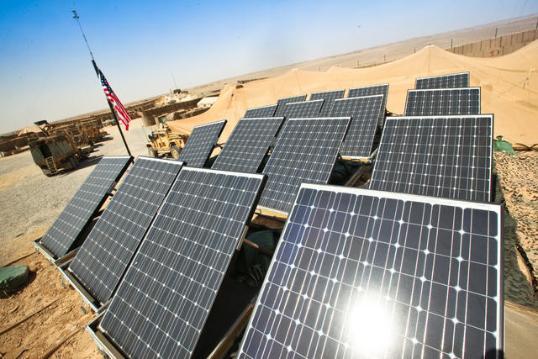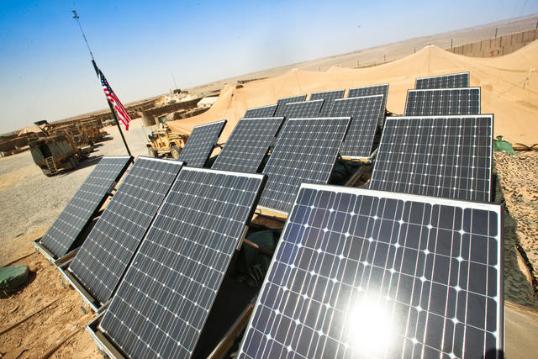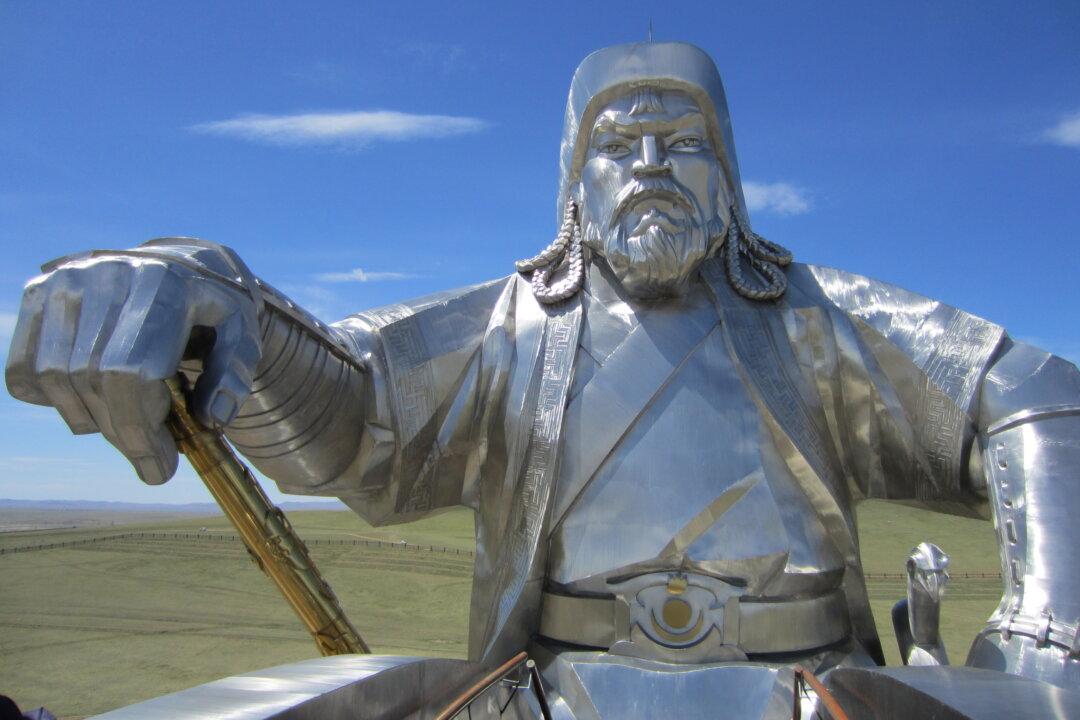The U.S. Army is currently in the experimental phase of an alternative energy program that could make the military a little less reliant on fossil fuels. Out of the laboratory and into the field, the Army’s SAGE program includes innovative technologies and measures that are gradually being introduced to various base camps to test their efficiency limits and personnel capacities.
Pioneered in summer 2011 out of Base Camp Integration laboratories at Fort Devens, Mass., the “Smart and Green Energy for Base Camps” program, or SAGE, includes a multifaceted approach to energy savings at base camps overseas including solar power and utility systems, which have gradually moved into the field-testing phase over the past year.
This is not the first military push toward green or alternative energy. Last March, the U.S. Army’s “Net Zero” program tested solar power in war zones in response to decreased troops in the Middle East.
Last month, The Epoch Times reported on the U.S. Navy’s Great Green Fleet, which tested alternative biofuels to power its warships.
According to the U.S. Army, the heart of SAGE includes the smart micro-grid power distribution system, which is referred to imply as a micro-grid. The micro-grid is much more energy-efficient than a traditional power assembly, which uses approximately 20 percent of a generator’s power. The micro-grid aspires to greatly increase that percentage.
Micro-grids are currently being tested in field camps overseas to test their efficiency.
Additionally, besides the micro-grids units, SAGE will test energy storage, as well as new structure designs, and is poised to serve between 150 and 2,400 soldiers. Other innovations include new energy-efficient design structures for shelters and buildings, solar-powered hot water heaters, and waste reduction systems.
“For me, it is all about the soldier,” said Col. Tim Hill, director of the U.S. Army Intelligence and Security Command Futures Directorate, in a SAGE story published on the U.S. Army’s homepage. “It is all about improving mission capability.”
To Hill, the cost of alternative energy includes both dollars and lives. When in combat, soldiers need to move fuel, which is both costly and risky. In 2010, $2.7 billion was spent to fuel the Army, and 1 soldier dies in every 24 ground resupplying missions.
“I won’t be satisfied until we have zero casualties for 100 percent of our convoys,” Hill continued.
Last year, Hill mentioned cultural changes among soldiers toward a greener lifestyle, including turning off lights when leaving a room, for example.
“I think a lot of it right now is behavioral change that I am looking into,” Hill explained. “Our soldiers are used to having their tents in the summer cold. So they leave the environmental control units running all day.”
Additionally on the testing block is the Army’s new line of portable generators. Called the Advanced Medium Mobile Power Source, the new portable generators are 20 percent more efficient than older models.
The Epoch Times publishes in 35 countries and in 19 languages. Subscribe to our e-newsletter.





